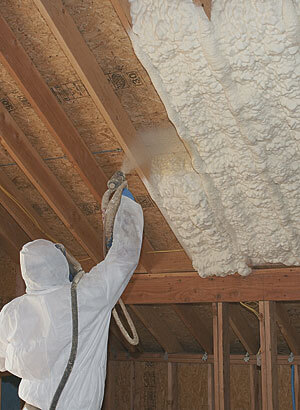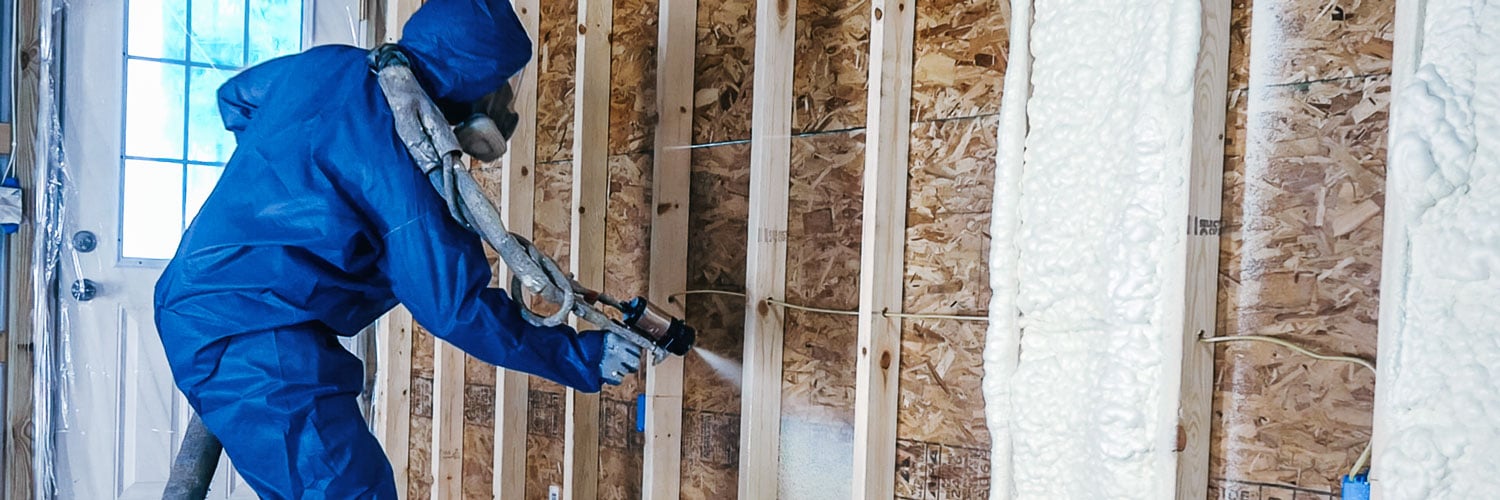Spray Foam: The Ultimate Option for Air Sealing and Insulation
Spray foam insulation has emerged as a leading solution for reliable air securing and thermal insulation, supplying a special combination of homes that establish it apart from standard techniques. Understanding the complete extent of its benefits, installation procedures, and contrasts with other insulation kinds is critical for making notified decisions.
What Is Spray Foam?
Spray foam is a versatile insulation product that integrates the principles of air securing and thermal resistance to improve energy performance in buildings. Composed mostly of polyurethane or other similar substances, spray foam is applied as a fluid that broadens upon contact with surface areas, producing a strong, constant layer of insulation. This distinct home allows it to fill up gaps, splits, and spaces that traditional insulation products may forget, offering a superior air seal.
There are 2 main sorts of spray foam: open-cell and closed-cell. Open-cell spray foam is lighter and more adaptable, providing superb sound absorption and a reduced R-value per inch - Spray Foam. In comparison, closed-cell spray foam is denser, offering a greater R-value, moisture resistance, and added architectural stability to constructing components
The application procedure generally entails specialized devices, making certain a seamless application that sticks to various substrates, consisting of wood, metal, and concrete. This versatility makes spray foam appropriate for both brand-new constructions and retrofitting existing frameworks. Its capacity to create an airtight obstacle dramatically contributes to minimizing power intake and improving indoor air high quality, therefore making it a preferred option amongst contractors and home owners alike.
Advantages of Spray Foam Insulation
Among one of the most significant advantages of spray foam insulation is its outstanding capacity to develop a continual air obstacle, which effectively minimizes energy loss. Unlike conventional insulation materials, spray foam increases to fill up spaces and fractures, making sure that air leak is substantially lowered. This particular not just improves energy effectiveness but also results in lower energy costs with time.
In addition, spray foam insulation supplies remarkable thermal resistance, contributing to a more stable interior setting. Its high R-value per inch enables efficient insulation in restricted spaces, making it ideal for attics, wall surfaces, and crawl areas. Additionally, the moisture-resistant buildings of spray foam aid stop mold and mold development, promoting healthier living problems.
An additional vital benefit of spray foam insulation is its sound-dampening top qualities (Spray Foam). It successfully decreases sound transmission between rooms, developing a quieter and much more comfortable home setting. The durability of spray foam also stands apart, as it does not sag or settle with time, keeping its performance throughout its lifespan
Exactly How Spray Foam Functions
Comprehending just how spray foam insulation works is essential for appreciating its performance in air sealing and thermal resistance. Spray foam insulation includes two main parts: isocyanate and polyol resin. When these elements are combined, they undergo a chemical response that causes the material to broaden swiftly, creating a thick foam that loads cracks, gaps, and tooth cavities.
As the foam increases, it sticks to surfaces, forming a closed seal that dramatically reduces air infiltration. This characteristic makes spray foam insulation extremely efficient at protecting against drafts and moisture penetration, which can bring about power loss and damages with time. Additionally, the closed-cell variant of spray foam provides remarkable thermal resistance as a result of its inflexible framework, properly minimizing heat transfer.
The distinct properties of spray foam allow it to conform to irregular surfaces, ensuring comprehensive coverage and a smooth obstacle. Because of this, spray foam insulation not just improves power effectiveness however likewise contributes to improved indoor air top quality by decreasing the build-up of allergens and pollutants. Eventually, comprehending the mechanics behind spray foam underscores its duty as a premium option for insulation and air sealing in both business and property applications.
Installment Process Overview

Before setup, the area must find out this here be sufficiently cleansed and prepped, guaranteeing that surfaces are without wetness, particles, and dirt. Because pollutants can jeopardize bond and general efficiency, this action is critical. Once the area is prepared, the application involves mixing the two components of go now the spray foam, which expands upon get in touch with and fills up spaces successfully.
Trained experts must carry out the installation, using customized tools to make sure consistent protection and ideal density. Security safety measures, including wearing safety equipment and making certain correct air flow, are necessary throughout this process. After application, the foam usually remedies quickly, forming a strong obstacle that improves energy performance.
Contrasting Spray Foam to Standard Insulation
When reviewing insulation choices, spray foam insulation stands out in comparison to standard materials such as fiberglass and cellulose. Unlike fiberglass and cellulose, which can enable air infiltration, spray foam broadens upon application, filling voids and gaps to develop a closed seal.
In addition, spray foam offers a greater R-value per inch than conventional insulation kinds, providing even more effective thermal resistance in a thinner profile. This particular is particularly valuable precede with minimal cavity depth. In addition, spray foam is resistant to wetness and mold and mildew growth, which can be a considerable interest in cellulose and fiberglass, especially in moist environments.
Nonetheless, spray foam insulation generally brings a greater ahead of time cost than its conventional equivalents. Home owners must evaluate this preliminary financial investment versus lasting energy savings and performance benefits. Eventually, while both insulation types offer their objective, spray foam becomes an advanced solution for modern insulation needs, especially in terms of air sealing and thermal effectiveness.

Verdict
In recap, spray foam insulation stands for an extremely efficient service for accomplishing optimal air sealing and thermal resistance. Its unique residential properties, including moisture resistance and audio dampening, make it ideal for different applications in both new constructions and retrofitting tasks (Spray Foam). The initial prices might be higher contrasted to conventional insulation products, the long-lasting benefits, such as substantial energy savings and enhanced indoor air top quality, justify the financial investment and highlight its worth in contemporary building methods.
Spray foam insulation has arised as a leading solution for reliable air sealing and thermal insulation, supplying a special combination of residential or commercial properties that establish it apart from conventional approaches.Spray foam is a versatile insulation have a peek here product that combines the concepts of air securing and thermal resistance to improve power efficiency in structures.When evaluating insulation choices, spray foam insulation stands out in contrast to conventional products such as fiberglass and cellulose. Ultimately, while both insulation types offer their purpose, spray foam emerges as an extra advanced solution for contemporary insulation requirements, especially in terms of air sealing and thermal efficiency.
In summary, spray foam insulation represents a very reliable option for attaining optimal air sealing and thermal resistance.